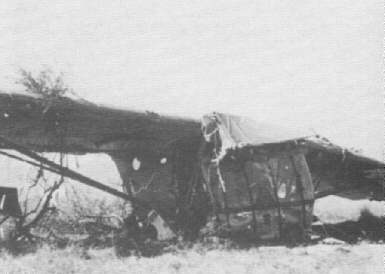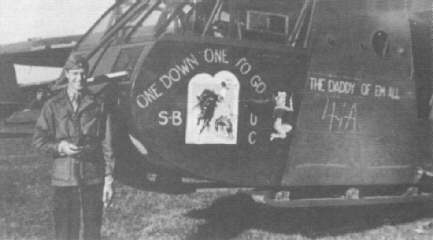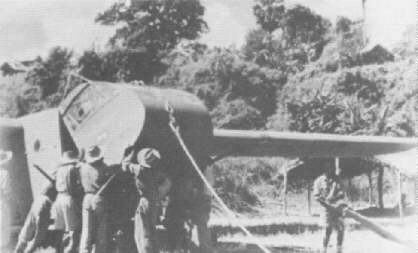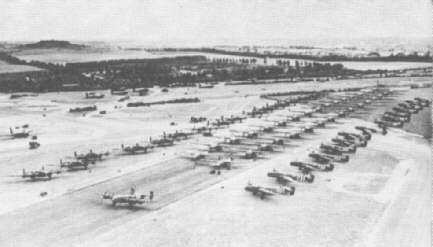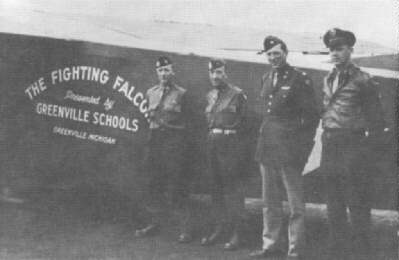
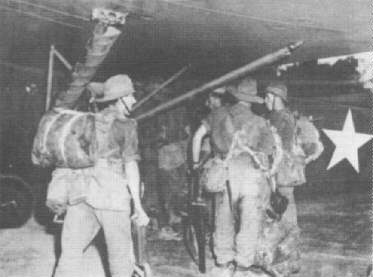 |
|
Lalaghat Airfield Assam, India, March 5, 1944. A squad of British Chindit soldiers board an American glider preparing to take off for LZ Broadway which is located 165 miles behind Japanese lines in Burma. Imperial War Museum |
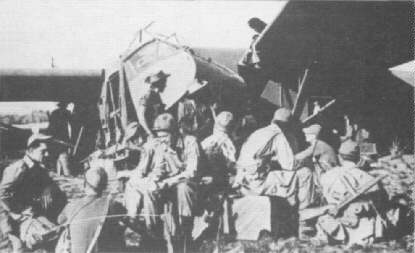 |
|
March 6, 1944. Glider pilots of the 1st Air Commando
Group take a break during salvage operation on LZ Broadway 165 miles
behind Japanese lines in Burma. The two gliders in the background
had crashed together during landings made in total darkness the
preceding night. U.S. Air Force
|
